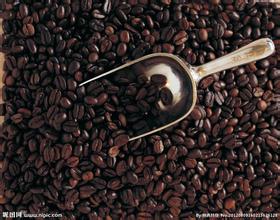Specialty coffee mocha coffee introduction to mocha coffee
Coffee beans from coffee's hometown.
Yemen was known as Arabia until the 6th century AD, so coffee trees transported from Yemen to other places were also called Arabic coffee trees. But the origin of these trees is Ethiopia, and it was the Dutch who spread these coffee trees around the world. Dutch merchants sailing east around The Cape Of Good Hope had to pass the east coast of Africa to the port of Mocha in Yemen before embarking on their long trek to India. In 1696, the Dutch introduced coffee trees to Ceylon (now known as Sri Lanka) and then Batavia in Java.
Mocha coffee beans
Mocha coffee beans
Mocha beans are smaller than most coffee beans, which makes them look like peas-in fact, peaberrybeans are sometimes referred to as mocha beans. Mocha coffee beans are similar in appearance to Ethiopian Harrar coffee beans, which are small in size, high in acidity, and mixed with a strange and indescribable spicy flavor. Careful tasting can also discern a hint of chocolate, so attempts to add chocolate to coffee are a natural progression.
In Yemen, coffee growers plant poplars to give coffee the shade it needs to grow. As in the past, the trees were planted on steep terraces to maximize use of less rainfall and limited land resources. In addition to tipika and bourbon coffee trees, more than a dozen different coffee species originating in Ethiopia are cultivated in Yemen. But even good coffee, such as premium mocha coffee, dries and the rind remains attached to the beans. Yemen has until now often used traditional stone mills to remove the hard, dry husks, which makes the beans irregular in shape and often damages the beans.
Although Yemeni coffee is of good quality and creamy aroma, it has its drawbacks: quality is not always guaranteed and the classification of beans is uncertain. Traditionally, Yemen's best coffee beans come from Mattari, followed by Sharki and then Sanani. These beans are low in caffeine and are exported from December to April. There has been a problem in the past with coffee from the north being adulterated before it is shipped from the southern port of Aden. Only coffee shipped from the port of Hodeida can be identified as genuine northern origin. Yemeni coffee is mostly grown naturally, mainly because growers lack funds.

Important Notice :
前街咖啡 FrontStreet Coffee has moved to new addredd:
FrontStreet Coffee Address: 315,Donghua East Road,GuangZhou
Tel:020 38364473
- Prev

Boutique Coffee in Tanzania Coffee production area in the northern highlands of Kilimanjaro Volcano
Gourmet coffee has soft acidity and attractive aroma, which is absolutely worth enjoying. Coffee exports from Tanzania (Tanzania) play an important role in the whole national economy. Bean-shaped berry coffee is very productive and is said to be more fragrant than ordinary coffee. Generally speaking, the coffee beans in Tanzania have an extraordinary quality. For example, in the neighborhood of Kilimanja
- Next

Fine coffee mocha coffee origin mocha coffee practice
Coffee beans from coffee hometown. Before the 6th century AD, Yemen was called Arabia, so coffee trees shipped from Yemen to other places were also called Arabian coffee trees. But the origin of these trees is Ethiopia, and the Dutch spread these coffee trees around the world. Dutch merchants sailing eastward around the Cape of good Hope (The Cape Of Good Hope)
Related
- Does Rose Summer choose Blue, Green or Red? Detailed explanation of Rose Summer Coffee plots and Classification in Panamanian Jade Manor
- What is the difference between the origin, producing area, processing plant, cooperative and manor of coffee beans?
- How fine does the espresso powder fit? how to grind the espresso?
- Sca coffee roasting degree color card coffee roasting degree 8 roasting color values what do you mean?
- The practice of lattes: how to make lattes at home
- Introduction to Indonesian Fine Coffee beans-- Java Coffee producing area of Indonesian Arabica Coffee
- How much will the flavor of light and medium roasted rose summer be expressed? What baking level is rose summer suitable for?
- Introduction to the characteristics of washing, sun-drying or wet-planing coffee commonly used in Mantenin, Indonesia
- Price characteristics of Arabica Coffee Bean Starbucks introduction to Manning Coffee Bean Taste producing area Variety Manor
- What is the authentic Yega flavor? What are the flavor characteristics of the really excellent Yejasuffi coffee beans?

